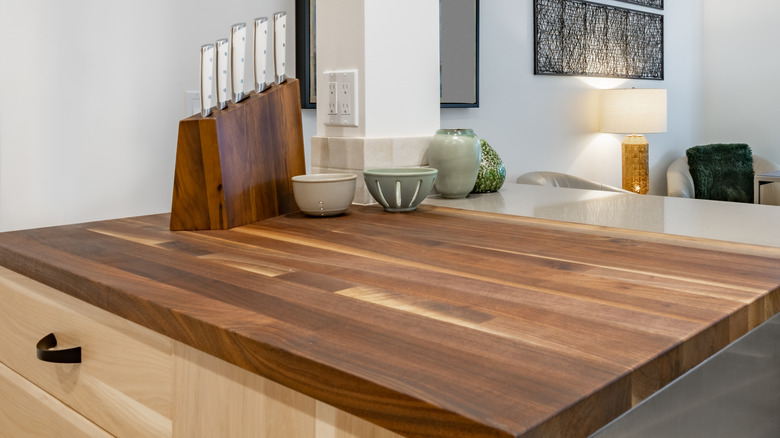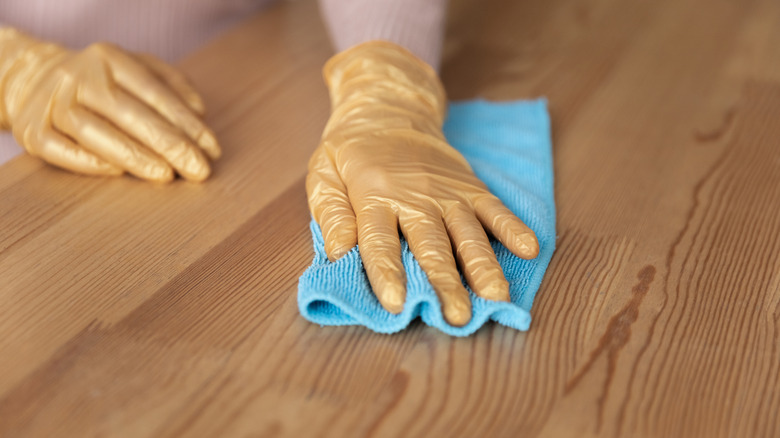The Unsanitary Mistake You're Making When Cutting On Butcher Block Countertops
Butcher block is a type of wood kitchen countertop that can bring warmth and natural beauty to this frequently used space in your home. They are a favorite for homeowners going for a rustic, farmhouse, or cottage-style charm, and they are a functional choice — as long as they are appropriately cared for. But in order to be safe for food preparation, they require proper sealing, cleaning, and hygiene practices.
Without taking the necessary steps, you risk letting bacteria penetrate and build up into the wood. This is a big mistake. Wood is porous, which means it can absorb unwanted contaminants from raw meat and fish and increases the risk of cross-contamination. As a result, you should seal your butcher block countertop before slicing and preparing any food on it to prevent juices and bacteria from seeping into the wood and causing an unsanitary mess.
Butcher block countertops come in a variety of woods, including walnut, oak, and maple, giving you options to match your style. There are two main construction types: end grain boards, which have a checkerboard pattern where the wood ends face upward, and edge grain boards, which feature long strips of wood aligned side by side. Luckily, both types of butcher block countertops need the same type of sanitation care.
How seal your butcher block countertop
To keep your butcher block food-safe, it's essential to seal all wood countertops properly. Not all standard wood finishes are food-safe, even the ones promoted for kitchen use. Mineral oil is the go-to for sealing butcher blocks. Other types of oil, like walnut oil, olive oil, or linseed oil tend to become rancid over time.
Ready to get started? Here's how to seal your butcher block and improve its sanitation: after thoroughly cleaning your wood countertop, apply food-grade mineral oil and let it soak in. Repeat this process until the wood is fully saturated. When the oil stops absorbing, you'll know it's ready. Let it sit for 15 minutes or overnight, simply wipe off any excess with a clean towel.
Since mineral oil is non-drying (meaning it doesn't harden), you'll need to reapply regularly. Oil the wood daily for the first week, weekly for the first month, and then about once every three to four weeks for long-term maintenance as well as a continued sanitary measure.

